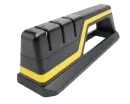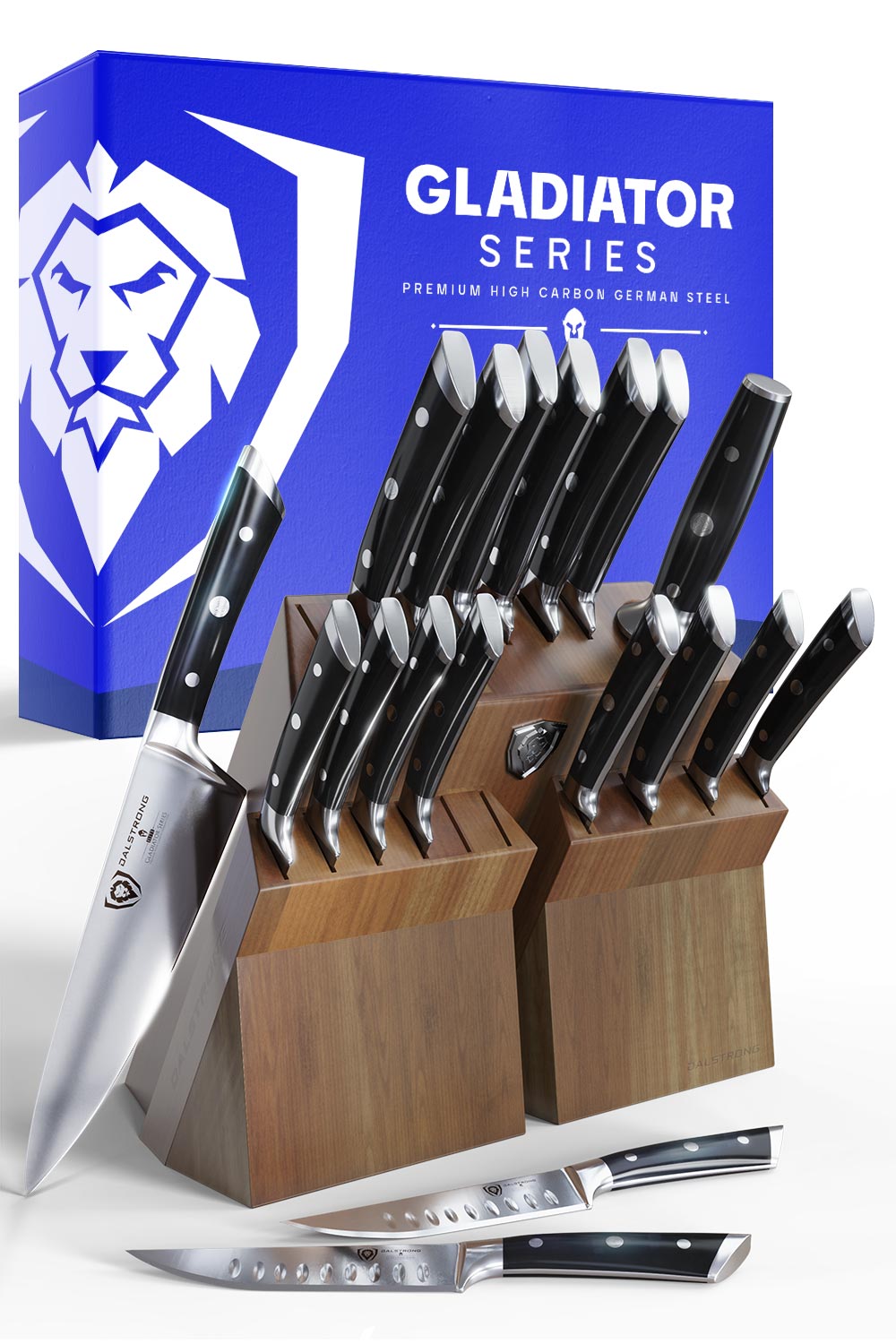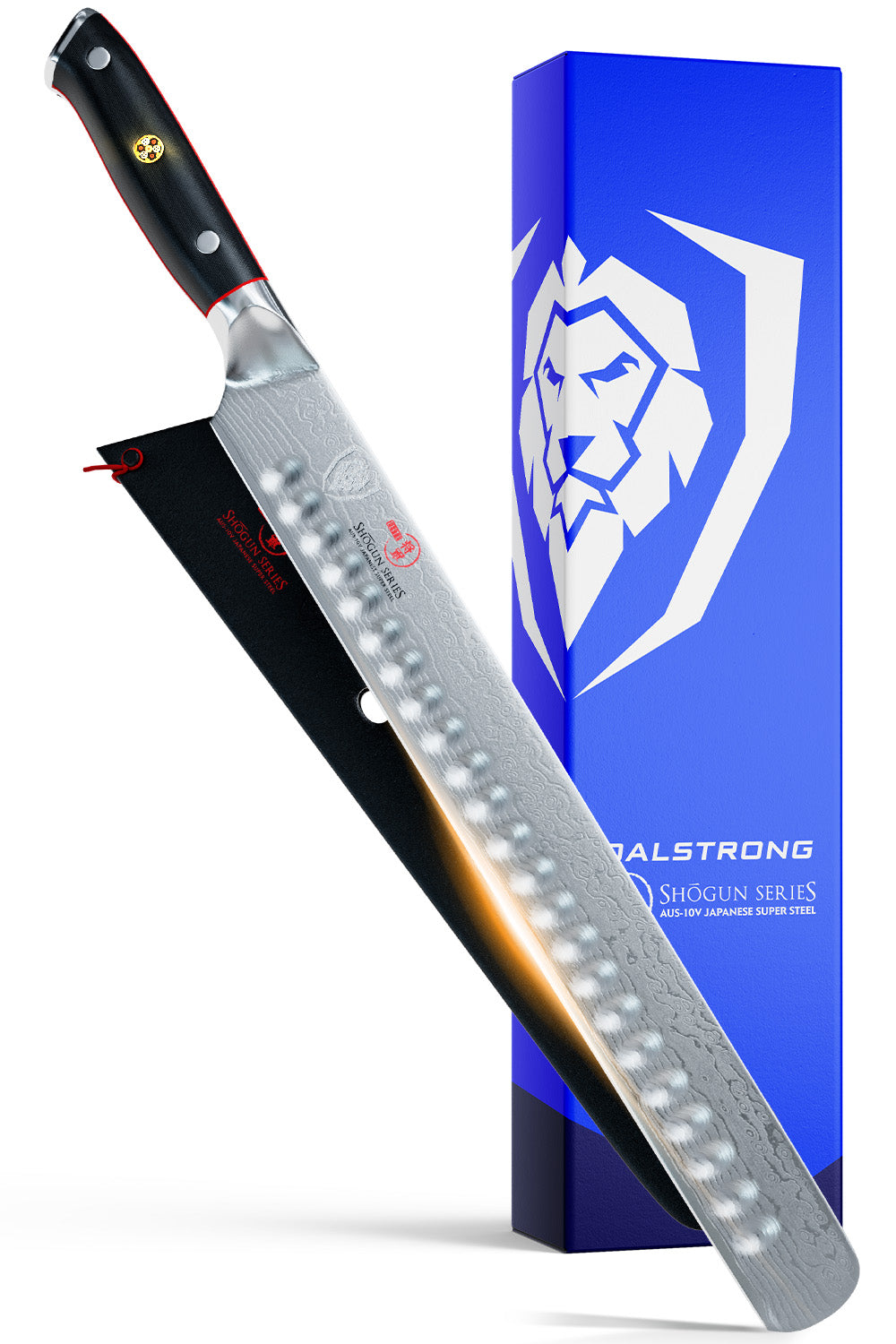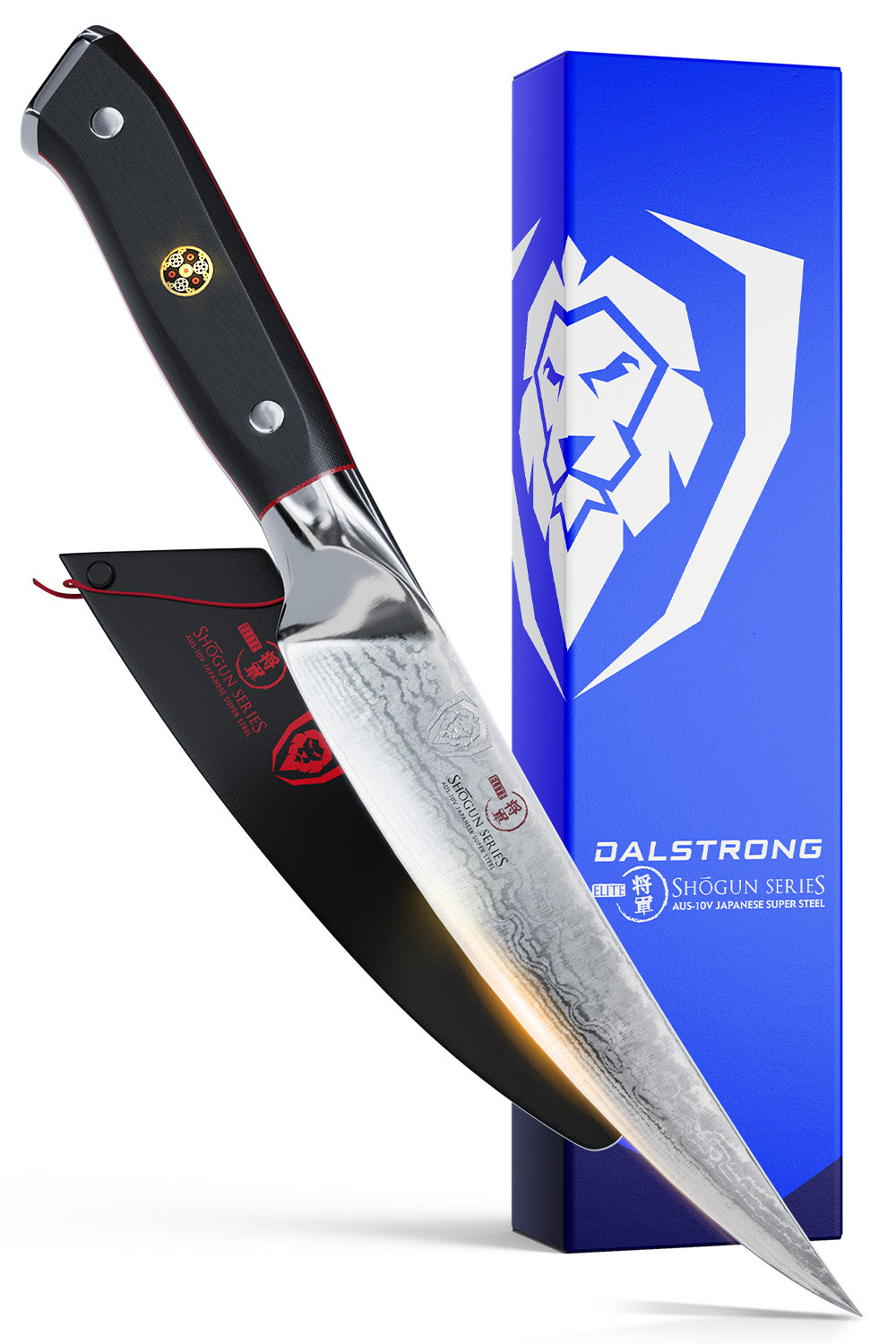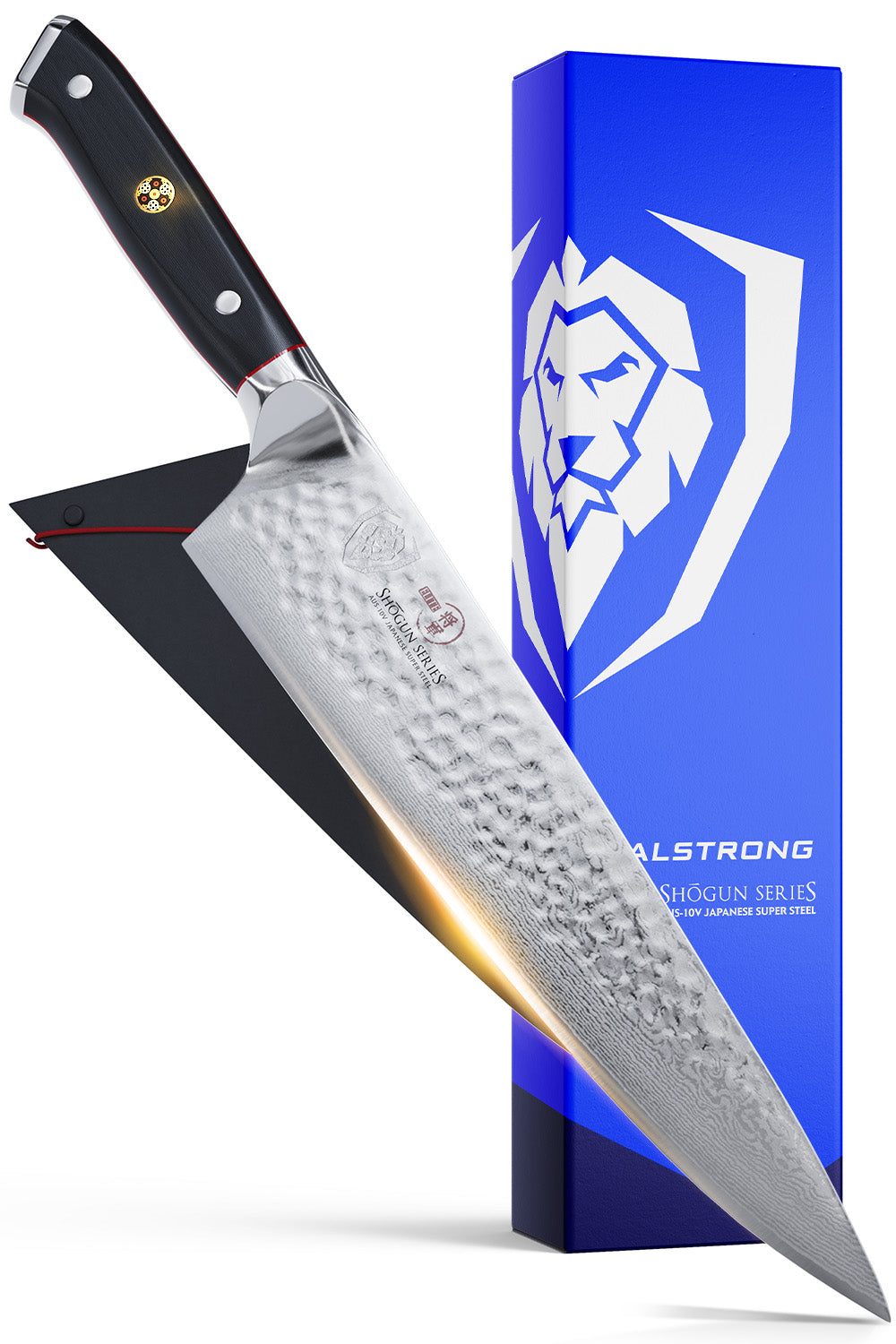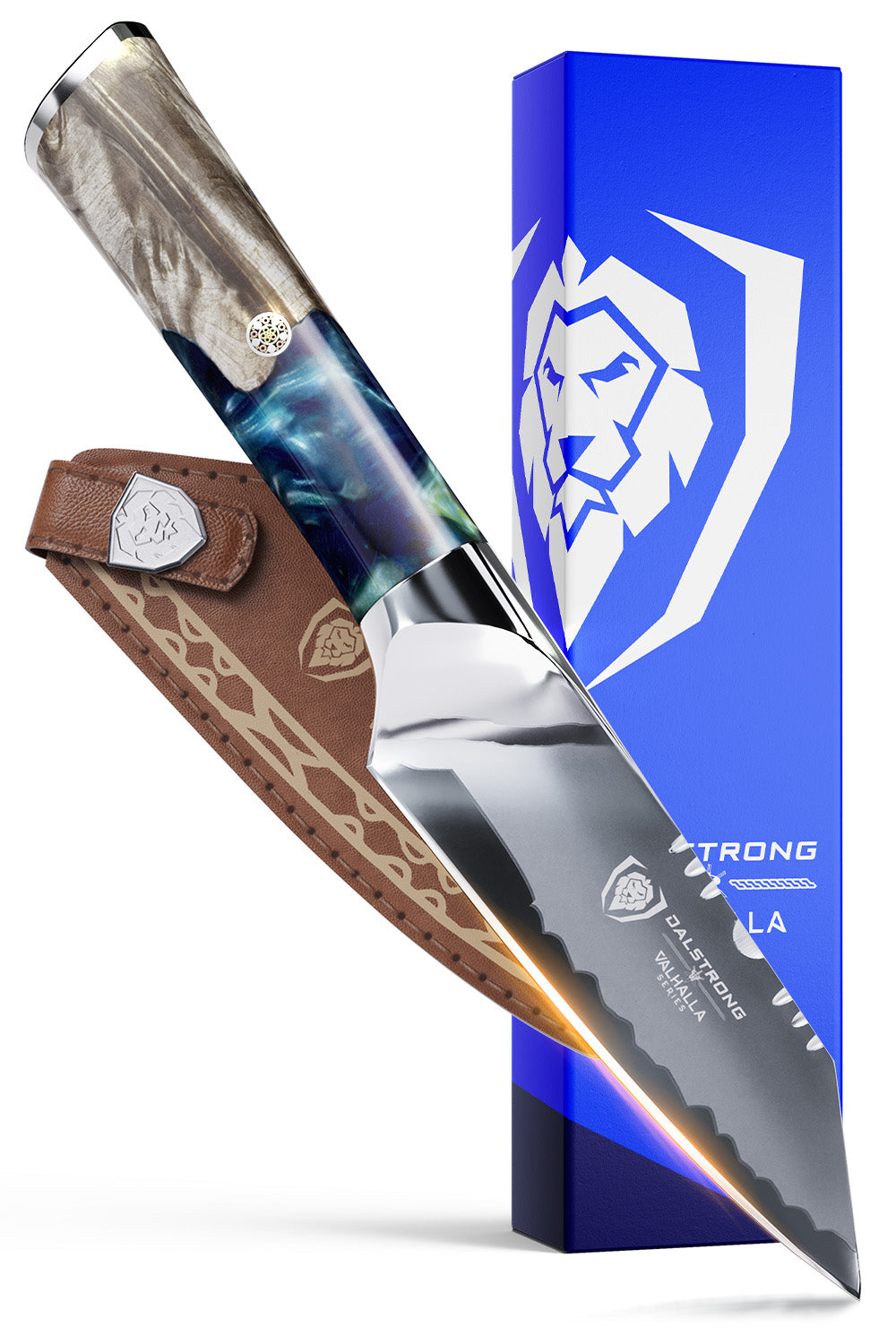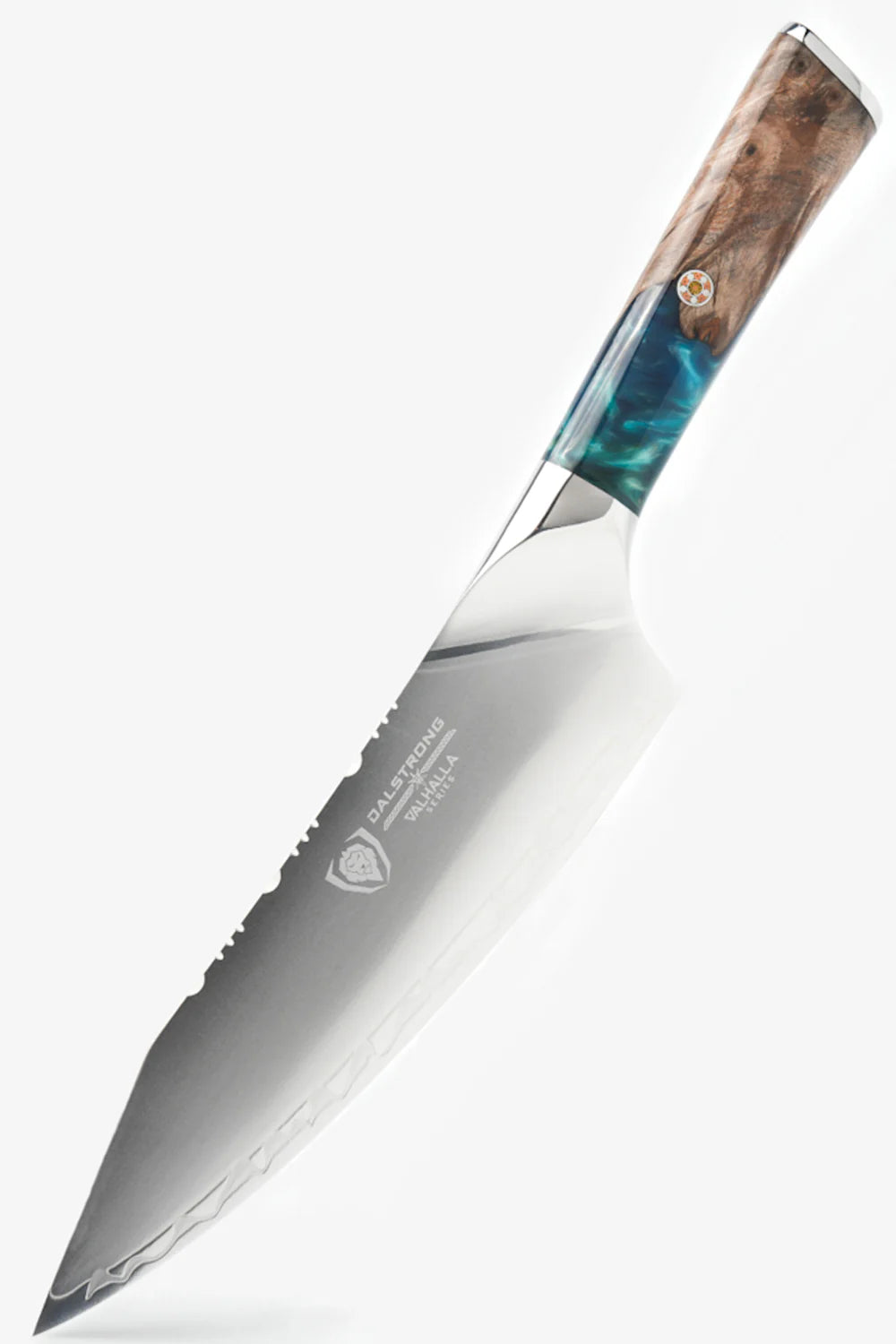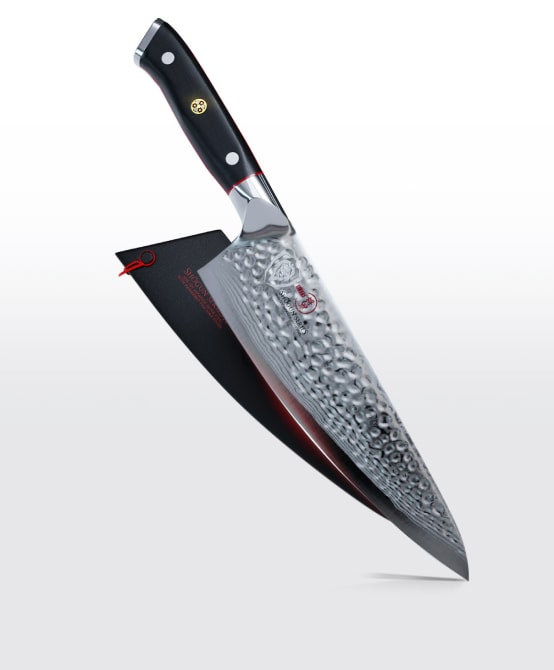The hardening process of the ceramic knives make it more prone to damage with strained use. In this case, stainless steel is a far better choice. Stainless steel knives outperform ceramic especially when it comes to heavy chopping, hacking, prying, and cleaving duties.
Ceramic knives have become extremely popular and are available at very affordable prices. Whilst Ceramic knives are perfect for fine slicing and decorative cutting, it is important to know that they are not built for heavy-duty kitchen tasks like chopping tough ingredients such as thick fish bones and frozen meat.
Content Gallery
- What Are Ceramic Knives Made Of?
- Why Are Ceramic Knives Brittle?
- Are Ceramic Knives Better Than Stainless Steel Knives?
- Ceramic Knives VS Stainless Steel Knives
- Sharpening : Ceramic Knife VS Stainless Steel Knife
- Best Stainless Steel Knife Picks For You
- Frequently Asked Questions
The first historically known tool that resembles knives is flakes of obsidian-nuclei, i.e., products made of volcanic glass that our ancestors used several hundred thousand years ago. Having come a long way in metallurgy, we returned to the use of ceramics at the end of the twentieth century.
Over the years, stainless steel knives have got a strong reputation when it comes to cutting a variety of food items. However, there was no denying that these blades could get slightly challenging to maintain. Keeping this in mind, in about 1985, ceramic started being used to make knives.
Ceramic knives were the result of the most advanced technologies at that time. These knives are a result of the most advanced technologies at that time and to date, these knives have become extremely popular and are available at very affordable prices.
Continue reading this article to dive deep into the ocean of ceramic blades, how they are different from their other widely used stainless steel and Japanese steel counterparts and much more.
1. What Are Ceramic Knives Made Of?
Ceramic knives are made from nano-material called zirconium dioxide or ZrO2, which is obtained as a result of special processing of the mineral zircon. This is a material that belongs to the class of minerals of silicic acid salts that was discovered back in 1789.
This silver-gray shiny metal has high plasticity and is resistant to corrosion. Zircon is the most common zirconium material that is found in all types of rocks, mainly granites and syenites.
With zirconia and alumina powder under the high temperature of 2000 degrees C, the pressure of 300 tons was pressed into the mold and then the tool was polished with diamond to make the finished ceramic knife.
Ceramic knife is a new type of knife made of nano-technology that is 10 times sharper than an ordinary steel knife. Due to this, ceramic knives have the characteristics of high hardness, high density, high-temperature resistance, magnetization, and oxidation resistance.
The Mohs hardness of ceramic knives is 9, which is second only to the hardest substance in the world- the diamond! As long as one doesn’t throw it on the ground or hit or chop it, you don’t need to keep grinding it to get the sharpness back.
With this being said, it is important to keep in mind that ceramic knives are not suitable for food that needs to be chopped, such as hard ingredients like thick fish bones and frozen meat. Other non-hard foods such as green veggies, fruit pulp, sashimi, bamboo shoots, meat, seafood, shell-free shellfish, etc, can be dealt with with great ease with ceramic knives.
2. Why Are Ceramic Knives Brittle?
Just like any other product, ceramic knives come with their own set of advantages and disadvantages. Because ceramic knives are made of zirconia, the properties of their raw materials determine their hardness of 9.
Ceramic knives are very brittle. The toughness of these knives is low and cannot be used to cut hard ingredients. The knife also collapses easily when it's dropped from a height. Because of these reasons, ceramic knives cannot be used for cutting, smashing, prying, picking, etc.
Even though there has been an ongoing study in this product’s technology and the advancement in science, there is no solution to the original nature of this product. Additionally, ceramic knives are made into a knife with the help of a large diamond wheel. In the process, the thickness of the knife becomes thinner. A ceramic knife also has a handle that increases the weight and reduces the ability to be crash-proof.
3. Are Ceramic Knives Better Than Stainless Steel Knives?
Ceramic knives are sharper and much lighter than steel. These knives stay sharp for longer. Ceramic knives help you with fine slicing and decorative cutting but are not built to have heavy-duty kitchen tasks. In that case, steel is a far better choice.
While superior in a few ways, the hardening process makes ceramic knives prone to damage with strained use. In this respect, stainless steel knives tend to outperform ceramic, especially when it comes to heavy chopping, hacking, prying, and cleaving duties.
While stainless steel and ceramic knives have a lot of similarities like they can both cut food, both are adequately sharp, and you can find them in almost any style, there are some striking differences that make one better than the other.
Today, in the market you can find a stainless steel knife for any kind of kitchen job whereas that is not the case with ceramic knives. To be honest, if you want to invest in a few ceramic knives along with a nice set of stainless steel knives, I suggest you go for it. However, if you have just a ceramic set of knives, you will get into situations where you will end up using the ceramic where you shouldn’t be using it, and will increase the risk of knife chipping or breaking.
4. Ceramic Knives VS Stainless Steel Knives
|
Characteristics |
Ceramic Knives |
Stainless Steel Knives |
|
Material: |
These knives are made from Zirconia. |
The blades of these knives are made from stainless steel or high-carbon alloys. |
|
Sharpness: |
The materials that are used to make a ceramic blade are very hard. As a result, it can keep its razor-sharp edge and will not wear out easily. |
The situation with stainless steel knives is that they can lose their edge’s sharpness and you will have to sharpen them more often than a ceramic knife. |
|
Weight: |
Lightweight as compared to its metal counterpart. This makes for less wrist fatigue when preparing foods. |
Because of the weight of the steel, these knives can be slightly heavy and can cause fatigue. However, with advancements in technology, you can also find some super lightweight stainless steel knives in the market. |
|
Flexibility: |
Ceramic blades are very rigid which can be difficult to maneuver when handling complex kitchen tasks. |
Stainless steel knives have some flexibility which makes tasks like carving, prying, and the parting of hard food a breeze. |
|
Handling Comparison: |
A ceramic knife can feel odd to hold for the first time because they are lighter in weight than most knives we are used to handling. |
A stainless steel knife provides better grip and control from the first moment that you hold it by its handle. |
|
Durability: |
Ceramic knives are very durable if handled properly. They can be used even without sharpening it for a long period of time and are not prone to rust and corrosion. The only thing that would threaten its durability is cutting more solid or hard items. Also, dropping the knives on the floor can reduce its span. |
Steel knives also last for years, especially when cutting food like vegetables and fruits. Also, dropping the knife shouldn't break the blade. |
|
Versatility |
|
|
|
Maintenance: |
|
|
|
Odor: |
Ceramic materials are not very porous which keeps the blade from transferring odors from one food ingredient to another. |
Some steel knives have proven to transfer tastes from one food to the other if not cleaned properly between each use. |
|
Rust: |
In the case of ceramic knives it goes without saying that these knives are rust-proof because no metal, no rust. |
Stainless steel knives can rust if they are not washed and dried properly after every use. |
|
Price: |
Ceramic knives are priced higher than the other steel knives. Almost all ceramic knives are high end and there are almost no options to purchase affordable ceramic knives. |
These knives are available in a wide price range depending on the quality, type of knife, and brand you go for. |
5. Sharpening- Ceramic Knife VS Stainless Steel Knife
Ceramic Knife:
One of the major drawbacks of ceramic knives is the pain of sharpening them. They are so hard that they can only be sharpened with a diamond, and even then it is not as easy as it is with steel blades. Some of the best ceramic knife manufacturers offer a service for returning them to the factory for sharpening.
However, if this service is not available, you will have to sharpen it with a knife sharpener with diamond abrasive. The good part about these sharpeners is the fact that they are available at an affordable price. But the bad news is that these diamond sharpeners are not easy to use and it takes some time to perfect the skill of sharpening ceramic knives with accuracy and precision.
Steel Knife:
The increased availability and variety in steel performances have made sharpening standard kitchen knives so much easier. There are several ways to do this. You can drop off your steel knives at a local knife sharpening service or invest in a whetstone, manual sharpener, or electric knife sharpener.
I think the best and easiest way to keep your steel blade maintained is by using a honing rod. This is a super simple process that takes a minute. Honing rods don’t actually sharpen the blade and remove material but it straightens the edge and makes it easier to cut.
Most of the time, this is actually what your knife needs, and also, not removing blade material will extend the life of your kitchen knives.
6. Best Stainless Steel Knife Picks For You
Very honestly, I may sound biased but I love Steel knives, stainless or Japanese. While Ceramic knives may win a bit in terms of the price tag, I still believe in the superiority of steel knives. This is simply because of their versatility, beauty, history, excellent edge retention, durability, and nowhere-else-to-be-found sharpness.
What I also love about stainless steel knives is the fact that no matter what the shape or style of the knife is, they will always give you amazing cuts, maximum performance, and complete precision. Keeping this and the various uses of knives in mind, here is a list of some of my favorite knives that could be a great addition to your kitchen knife collection.
1) Boning Knife 6”- Shogun Series

This Boning Knife is an essential tool for deboning beef, pork, and wild game. The masterfully engineered work of art does wonders when it comes to de-boning, fileting, skinning, trimming, and butterflying meat. The blade of this knife will glide through sinew, fat, and muscle with great ease and give you perfect, clean cuts.
The beauty of this knife is that the narrow blade is shaped to sail along the contours of the bones, effortlessly slicing flesh away. The tapered tip is also designed to work within difficult-to-reach areas.
Pros:
- The tempering with liquid nitrogen enhances the strength, flexibility, and hardness of the blade.
- The high-carbon stainless steel cladding makes this knife incredibly durable and stain-resistant.
- The non-porous, fiberglass-like material is highly impervious to both heat and moisture, increasing the lifespan of the knife.
-
Compared to a ceramic knife, this knife can perform many more kitchen tasks, making it a very versatile kitchen tool.
Cons:
- A 6” boning knife might not be enough when you set off to debone a big bird, fruit, or vegetable. If that is the case, you can check out this slightly longer 8” boning knife.
- If you use a flexible boning knife on a thickened cut of meat, you run the risk of damaging the knife and injuring yourself.
- If the boning knife is too long and the job to be done is too intricate, you can also risk the loss of control over the boning knife.
2) Bread Knife 8”- Crusader Series

This stunningly designed, all-steel knife offers a minimalist aesthetic with an unmatched beauty. The serrated blade of the knife cuts through loaves of bread like butter, making sure to provide reduced friction and stuck-on food.
While the solid steel design of this knife ensures incredible toughness and resilience, the heat-treatment followed by a deep-freeze nitrogen cooling process enhances the knife’s hardness and flexibility. If you are a bread lover like I am, this is the knife you need!
Pros:
- The edge of each blade is painstakingly honed by expert craftsmen to ensure clean and precise cuts.
- The knife is crafted with a single piece of steel, making the blade of the knife ultra-sharp and wear-resistant.
- The full tang of the knife provides additional robustness.
Cons:
- While serrated blades can cut hard materials better, they are less precise than plain edges and can tear the object that is being sliced.
- Serrated blades are also significantly more difficult to sharpen.
3) Kiritsuke Chef’s Knife 8.5”- Omega Series
This multi-purpose chefs knife will definitely be the star of your kitchen. The blade’s composition does not only provide astonishing performance but also comes with a screamingly sharp edge. The added Nitrogen also provides exceptional wear resistance, ensuring that the blade’s performance will last longer.
Pros:
- The “LiquidMetal” pattern on the blade minimizes food drag and stuck-on food while maximizing slicing efficiency.
- The scalpel-like sharpness of this blade will help you sail through culinary challenges.
- This sharp knife will stay clean and last longer thanks to the rust and corrosion-resistant cladding.
Cons:
- While this knife is a great addition to any kitchen, it does come at a price. If that is the case, you can also go for this knife.
- As a new cook, the blade of this knife can get slightly intimidating. In that case, you also go for a 6” blade or a 7” blade of the chef’s knife.
4) Carving Knife & Fork Set 9”- Shogun Series
Love a good roast? Then this is what you need! This carving knife and fork set ensures that every roast, every brisket, every turkey, every piece of salmon, and every ham is perfectly sliced. Effortless motion and seamless maneuverability are what makes a knife the perfect tool to cut open a yummy roast.
The ultra-sharp blade of this knife will work tirelessly, by your side, enhancing your speed, precision, and endurance. I am obsessed with a good roast, and trust me, investing in this set is worth every dollar!
Pros:
- Each knife is hand-finished in the Honbazuke 3-step method, which results in a beautiful mirror polished edge and a razor-sharp blade.
- The handle of this carving knife is designed to provide superior hand control and maximum comfort while you cut into the meat.
- The shape of this blade is such that its contoured shape ensures that the meat is easily separated from the bone and gets to even those spots that are very hard to reach.
Cons:
- If you don’t cook roasts that often, then you would want to invest in a more versatile blade like a chef’s knife or a paring knife.
- While this set is a great investment, if you are not a regular roast eater it won’t make sense for you to shell out so much money. In that case, you can check out some solo slicing and carving knives.
5) Chef’s Knife 10”- Gladiator Series
This knife will be the silent hero in your kitchen, slicing up anything, big or small, with ease and minimal effort. The 10” blade of this knife also ensures that no task is too large and no food too formidable for this blade.
Featuring a beautiful, ergonomic, and ambidextrous handle, this chef’s knife will work for you non-stop, complementing your style and the food you plan on cooking. The blade of this knife is also incredibly dependable and brutally effective.
Pros:
- The Gladiator Series chef knife is carefully designed for maximum comfort and maneuverability, making any kitchen task super easy to complete.
- Not only is this knife pleasing to hold but the perfectly engineered balance also provides satisfying heft and presence to the knife.
- This knife is perfect for both heavy-duty cuts and more delicate detail work.
Cons:
- Although chef’s knives can handle nearly every cutting task in the kitchen, they are not the ideal choice for delicate, precision cutting like preparing sashimi or deboning fish. For such tasks, you will require a smaller, thinner, and more agile knife.
- A 10” blade can get too big for daily, smaller tasks. You can also check out a shorter 6” chef’s knife to add to your kitchen arsenal.
7. Frequently Asked Questions
How can you tell if a knife is ceramic?
A ceramic knife is 100% stainless, making it immune to acids and caustic substances. This makes ceramic excellent for tasks such as cutting citrus fruits. Ceramic in theory keeps its edge longer when cutting softer materials, like vegetables and other fibrous tissues.
Can you sharpen a ceramic knife?
A ceramic knife has the added benefits of not carrying odors and not rusting. The sharpening process for ceramic knives is different from the typical sharpening method for steel knives and will almost always require the use of diamond sharpeners.
What should you not cut with a ceramic knife?
A ceramic knife is not good for cutting tough foods. You should never use it for cutting foods with thick rinds such as pumpkin, winter squash, pineapples, and melons. Don’t use your ceramic knife set for slicing block cheese as well because this task may involve heavy force and cause blade flexing.
Do ceramic knives break easily?
The hardness that makes ceramic knives incredibly sharp and resistant to wear also makes them susceptible to chipping or breaking. If you drop one from your ceramic knife set, you are probably going to need a new blade.

































